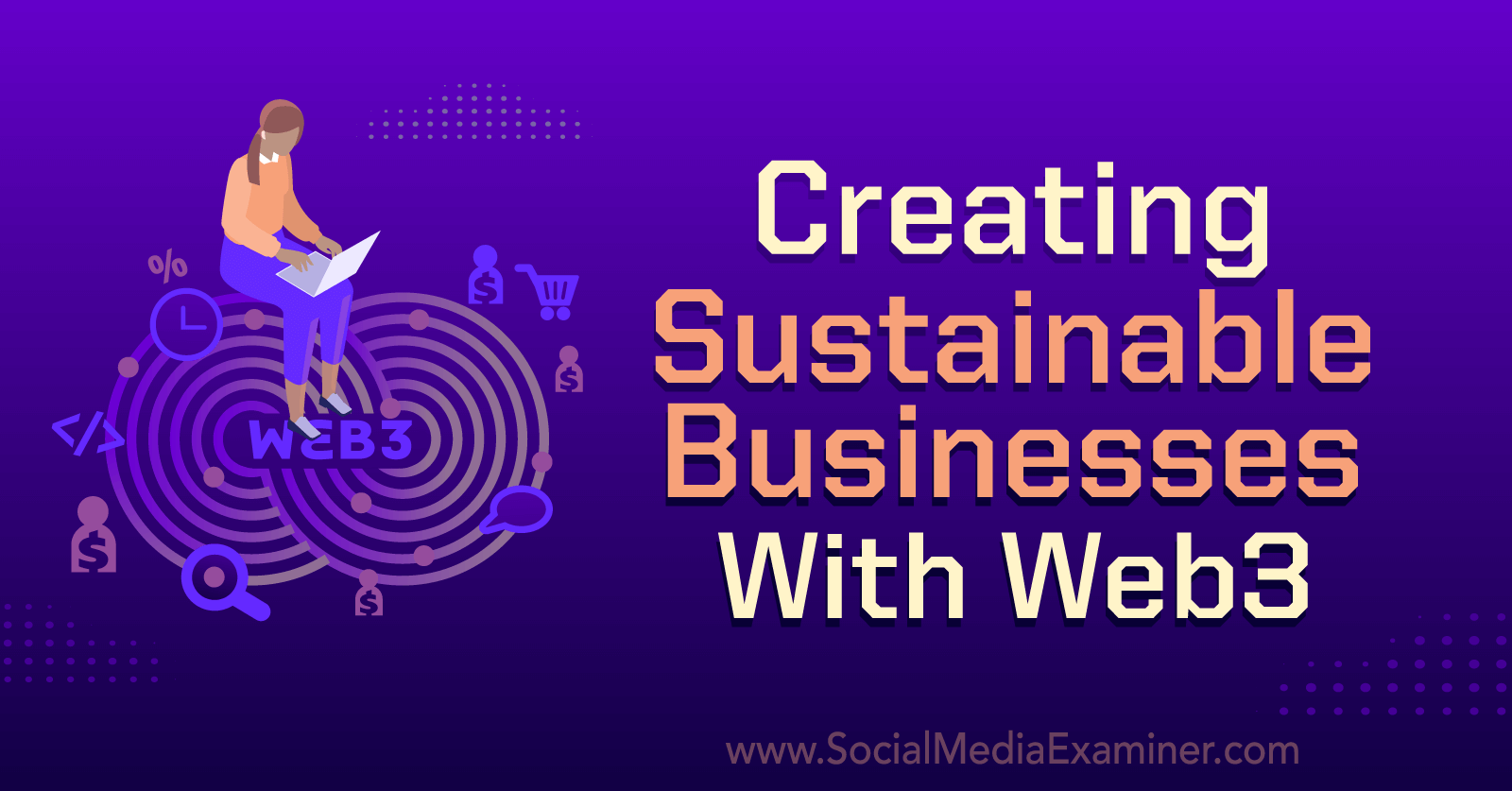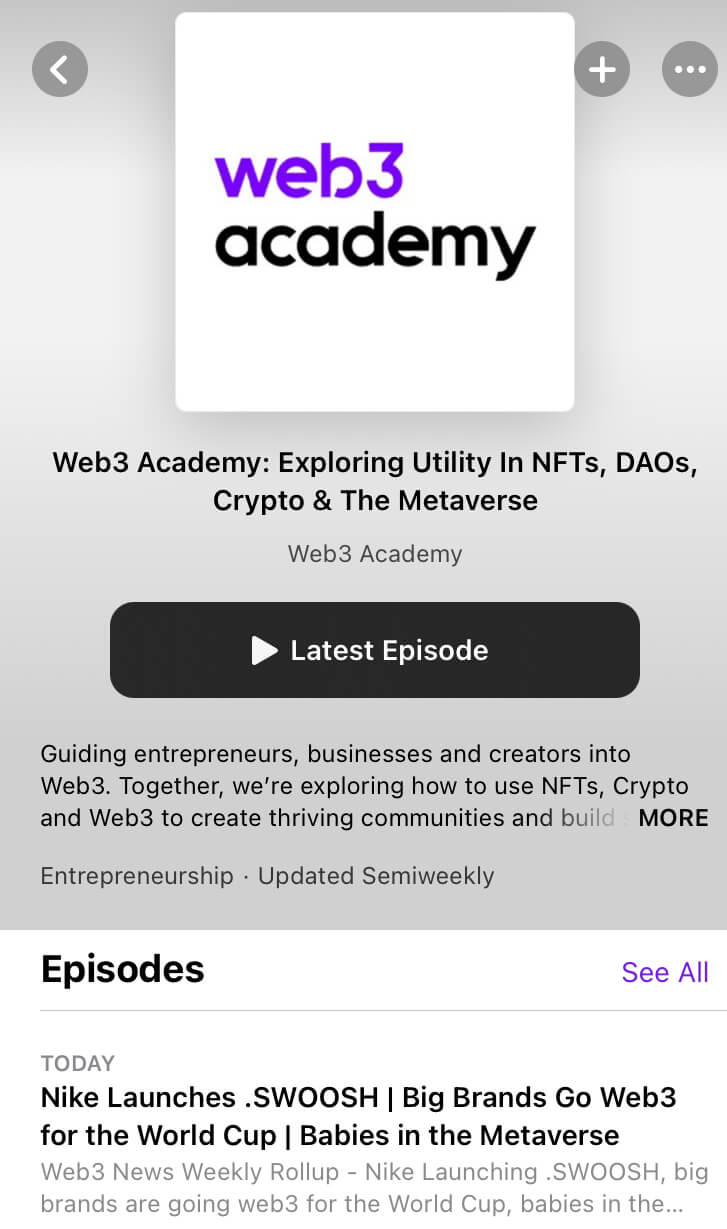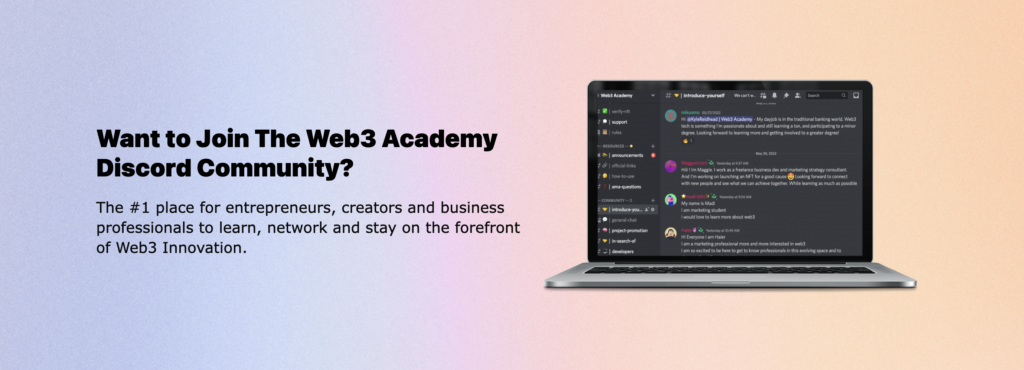Do you want to create a business that embraces Web3? Wondering what types of businesses are possible?
In this article, you’ll discover examples of Web3 business models and learn how to draw customers to your business using decentralized autonomous organizations and tokens or NFTs.

What Web3 Makes Possible for Business Models
There are two important business-related functions unlocked with Web3: ownership and interoperability.
Shared Ownership
In Web2, the internet experience most of the world is familiar with, you don’t really own anything because everything related to your business. Your content, your followers, your data, etc. are stored on a server run by a centralized company such as Facebook.
In Web3, ownership of these assets can be managed in the form of a fungible or non-fungible token.
Why does this matter?
In the Web2 world, your audience and customers aren’t incentivized to help you in any way beyond their transaction with you. Your audience might pay for your content but rarely will they help you build something more because there’s no mechanism to reward them with some type of ownership in whatever they help to create.
When you tokenize your business, you have the ability to share revenues with a global audience through an NFT and a DAO. Tokens are so much more than static jpegs.
All of a sudden you have a mechanism to turn members of a passive community or an audience into an active contributor who can have an ownership stake in whatever they help you to build or create.
And because tokens are programmable, utility isn’t limited to financial incentives. They can be used to grant voting rights and governance rights to the holders.
Cross-Channel Interoperability
It's very difficult to give your audience a pleasant experience across the various Web2 channels and platforms you use to connect with them.
Say you use Substack to deliver a monetized newsletter and you want to gather and engage with that audience in a gated community on Discord or on Zoom.
In order for that to happen, an API has to be in place to confirm that a person is paying for your content on Substack and is therefore granted access to your Discord.
It’s a time and resource intensive process full of friction points and it doesn’t always work.
Get World-Class Marketing Training — All Year Long!
Are you facing doubt, uncertainty, or overwhelm? The Social Media Marketing Society can help.
Each month, you’ll receive training from trusted marketing experts, covering everything from AI to organic social marketing. When you join, you’ll also get immediate access to:
- A library of 100+ marketing trainings
- A community of like-minded marketers
- Monthly online community meetups
- Relevant news and trends updates
Web3 streamlines and stabilizes that process.
When you connect your digital wallet to a platform or application you grant the platform or app read-access to the assets your hold. Instantly, ownership of a token or NFT is verified and the platform or app essentially says, “Oh, you have X token which means you get to see this content in this app, or you get to perform this action, or you get to enter this event.”
#1: Before You Start a Business In Web3
There are three considerations you need to address before you build a Web3-based business.
What Problem Will You Solve?
Regardless of whether you build your business on the blockchain, if you don’t provide an actual product or service that solves a problem for humans, you don’t have a sustainable, long-term business.
You need product/market fit for something that's going to improve someone's life or make something easier for them.
How Will You Build an Audience?
Right now, the number one way to build an audience for your business is to create content, often distributed on social platforms because it’s a mostly cost-free way to draw thousands or millions of people to your business.
Whatever you're going to do in Web3, you still need to attract an audience that’s ready to buy when you launch. Again, the path to that audience lies in content creation.

You build your audience by delivering content to them via a newsletter, a podcast, etc. You speak to them but they can’t speak to you or to each other.
Community is where those you are speaking to can speak with you and with each other.
How Will You Convert Your Audience Into a Strong Community?
When someone buys your NFT, you want them to hold onto that token so that scarcity increases the value of your tokens.
Gathering your audience into a community helps ensure the people who really believe in what you’re doing and want to be part of it stay involved with your business and hold onto the token that gives them equity in the business.

Community can be built on Discord, Twitter, Slack, or even Facebook groups.
#2: Business Models That Work in Web3
While big players in the Web3 space started projects focused on building a metaverse, producing a movie, or branding the next Disney, the most prevalent Web3-based business model from the last two years revolves around an NFT collection.
A project would launch a 10,000 piece NFT collection, token-gate a Discord community so that only people who held one of your NFTs could enter, and hope the collection sold out.
But is this a sustainable business model?
A lot of these NFT communities are realizing three things:
First, the value of their NFT assets were propped up by speculators and traders rather than people who believed in the mission and wanted to help build whatever would take the project forward.
Second, the idea of building with a community of 10k people is attractive but the reality is that it’s really difficult. Much more so than building a business a tight-knit group.
Third, after selling out an NFT collection, there is no additional revenue.
Many of these NFT communities are now banking on recurring revenue from royalties realized through secondary market sales of their NFTs. While this can be a lucrative it's also counterintuitive to building a community you want people to remain part of because your only revenue is derived from people leaving your community and selling their NFT to someone new.
So the question becomes, what business models will work in Web3 and provide sustainable revenue…
Here are X models to consider.
Reserve NFT Model
If your collection comprises 10,000 NFTs, launch by selling 9,000 and reserve 1,000 of the NFTs.
Then, focus on building a community that retains members and therefore, value. When your project needs funding, you can release a portion of the NFTs held in reserve.
Larva Labs successfully used this model with their CryptoPunks collection.

Discover Proven Marketing Strategies and Tips
Want to go even deeper with your marketing? Check out the Social Media Marketing Podcast! Publishing weekly since 2012, the Social Media Marketing Podcast helps you navigate the constantly changing marketing jungle, with expert interviews from marketing pros.
But don’t let the name fool you. This show is about a lot more than just social media marketing. With over 600 episodes and millions of downloads each year, this show has been a trusted source for marketers for well over a decade.
Secondary Token Model
After you have an established NFT collection and community, you can launch a second fungible or non-fungible token.
For example, Bored Ape Yacht Club launched Mutant Ape Yacht Club with ApeCoin.

This is a viable option but comes with a caution.
If you're launching a second token because your existing community needs revenue, this route can set you up for failure. It’s difficult enough to build one community (or business) and maintain value to retain that community.
When you launch a second token, you do generate more revenue, but you also have a second community (business) to maintain.
If the business/community is going well and you simply want to expand and grow, launching a second token could be the right move.
Kevin Rose of Moonbirds launched Oddities for this reason and was successful in part because Moonbirds has a massive support team who are able to manage both groups of token holders.
Subscription/Membership + Revenue Sharing NFT Model
If you happen to be a creator, you have to square with the fact that many people in your audience simply want to consume the content you create.
They don't want to build with you or help you with your marketing or product development. They don't care about DAOs and the stuff you're doing in Web3.
So none of the previous models are good fit for that audience. In part because if when you launch an NFT collection, especially if it’s a limited series, people with buy because the want to build with your or people will buy because they’re speculating on the future value of that token.
Then, the price of your token rises so hight that it effectively excludes so many people from your community because they’re priced out.
This leaves you with a very small customer base.
The good news is that this doesn’t have to be an either or situation.
Launch an NFT collection for who want to build and grow with you, and launch a Web2-based subscription to the people who simply want to buy what you create.
Share some of the revenue from the Web2 membership/subscription audience with the Web3 community and they will help you develop your site, market your products, and create content for the Web2 audience.
For example, a musician could gather a Web3 community of thousands of people who love the music by saying, “Hey, you are my first big fans. Back me by buying an NFT and work with me to fund and promote my album and I will share my future revenues with you for X amount of time.”
And this where the interoperability of Web3 really comes into play.
The traditional subscription model signs a customer up and X amount of money is automatically charged to a credit card or bank account each month. But that customer doesn’t have easy access to the WEB3 community.
In this hybrid model, every customer’s subscription fee can be managed through the purchase of an NFT that utilizes the Unlock protocol to stipulate that X amount of currency will be charged as a recurring subscription.
Then, every member of your audience can–if they so choose, access a gated, quality community experience.
Cohort-Based NFT Membership Model
Finally, there are cohort-based NFTs that leverage supply/demand and FOMO.
Say you launch a premium subscription tier for your newsletter on Substack and that your initial release is 500 subscriptions at $5 a month.
If that sells out and your audience continues to grow, you launch a second release (cohort) at $10 a month.
Each time you sell out you increase the rate of the monthly subscription. As you continue to raise your rates, that value of the NFTs purchased in your initial release goes up because you continue to deliver the same value to all holders. It’s just that some people pay $5 a month, some people pay $10 a month, etc.
Kyle Reidhead is he's the co-founder of Impact Digital Marketing, a Growth Marketing Agency that works with creators, and co-founder of Web3 Academy, a media platform that helps businesses and creators understand how to use Web3. He also co-hosts the Web3 Academy podcast. Connect with him on Twitter @KyleReidhead.
Other Notes From This Episode
- Connect with Michael Stelzner @Stelzner on Instagram and @Mike_Stelzner on Twitter.
- Watch the interview and other exclusive content on the Crypto Business YouTube channel.
Listen to the Podcast Now
This article is sourced from the Crypto Business podcast. Listen or subscribe below.
Where to subscribe: Apple Podcast | Google Podcasts | Spotify | Amazon Music | RSS
✋🏽 If you enjoyed this episode of the Crypto Business podcast, please head over to Apple Podcasts, leave a rating, write a review, and subscribe.
Disclaimer: The information provided on this website is provided solely for educational purposes and does not constitute any advice, including but not limited to, investment advice, trading advice or financial advice, and you should not treat any of the website's content as such. Social Media Examiner recommends that you independently research any information contained on this Website and that you speak with an investment professional before making any decision to purchase, trade, hold or sell cryptocurrency. Nothing herein should be treated as a recommendation to buy, sell or hold cryptocurrency. Social Media Examiner cannot guarantee the accuracy of any information listed on the website and is not responsible for any missing or wrong information. All information is provided as is and should be used at your own risk. Social Media Examiner disclaims all responsibility and liability for your use of any information found on the website.
Attention Agency Owners, Brand Marketers, and Consultants

Introducing the Marketing Agency Show–our newest podcast designed to explore the struggles of agency marketers.
Join show host and agency owner, Brooke Sellas, as she interviews agency marketers and digs deep into their biggest challenges. Explore topics like navigating rough economic times, leveraging AI, service diversification, client acquisition, and much more.
Just pull up your favorite podcast app, search for Marketing Agency Show and start listening. Or click the button below for more information.

